We saw a lot of snakes this trip, especially more Mole Snakes than usual. Puff Adders had been absent from our recent trips, so we were delighted to come across one in the road just before the KK carport parking area.
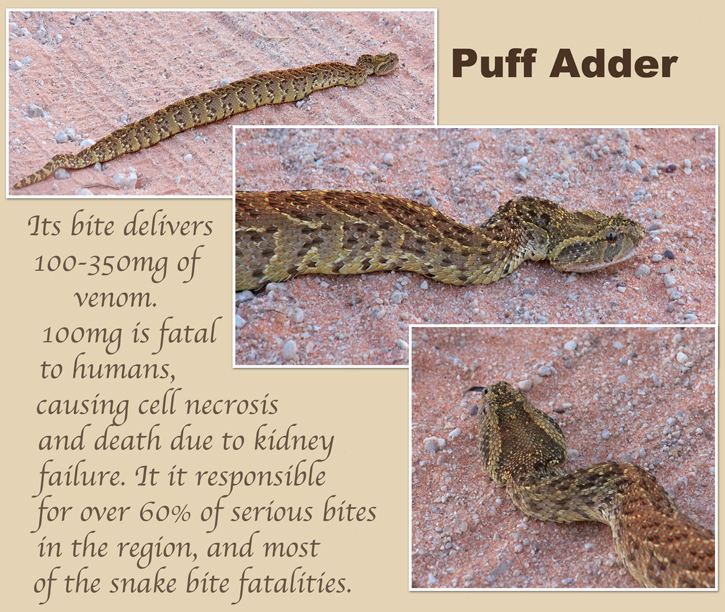
Compared to Cape Cobras:

Hanri and cub made yet another appearance
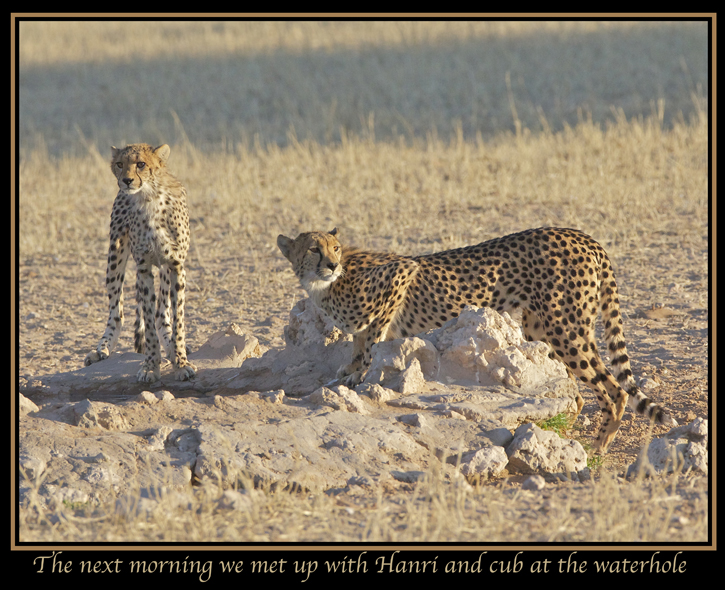


Another squirrel family
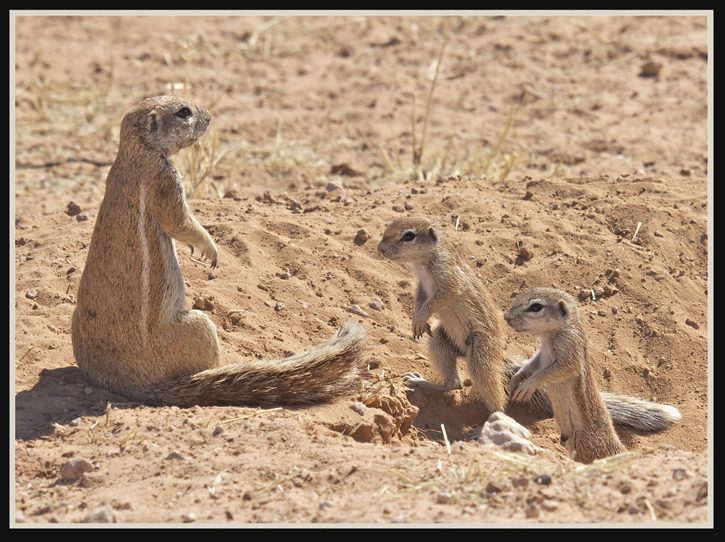
A steenbok, which are often seen in the KK area

The following series is one of our best sightings ever - we were grinning ear to ear that day

, and decided after the trip it was our favorite of the entire visit.
While driving back to KK from Kij Kij, on the Lower Dune road, we found a Honey Badger mom carrying her cub to a new den.
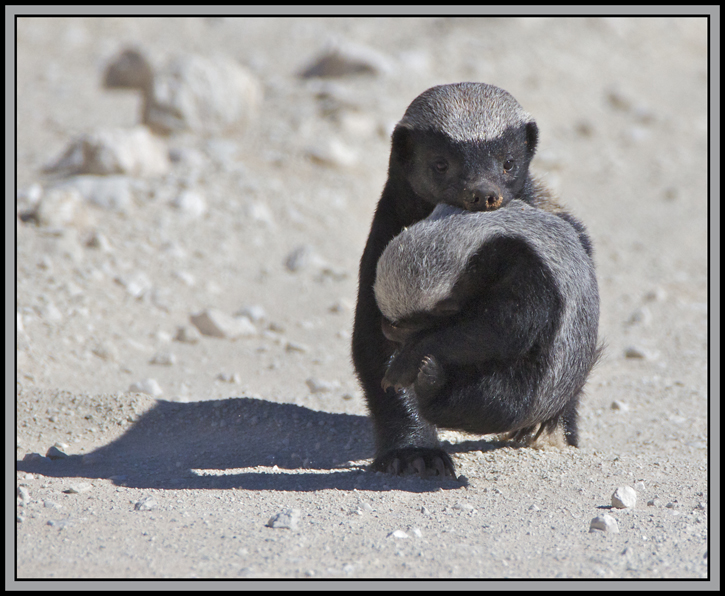
She would walk at a fast pace for a relatively short distance, stop to rest, then proceed again, repeating this pattern many times.
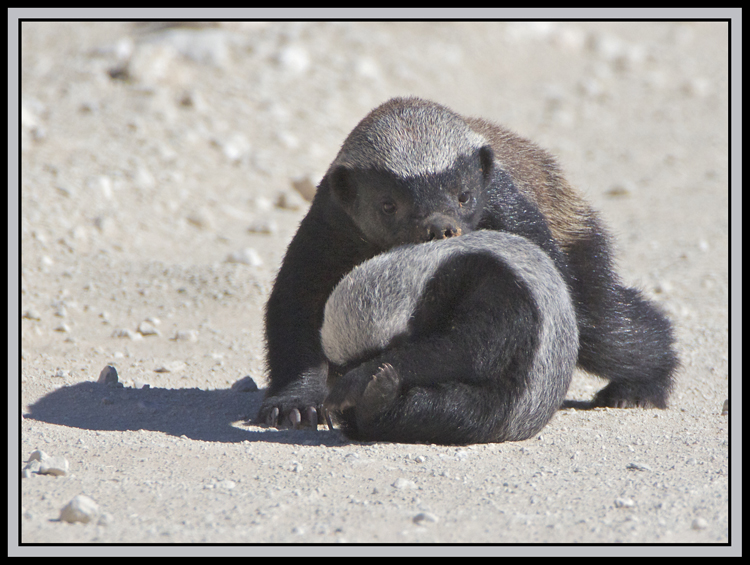
During one rest the cub started to uncurl and walk. Mom snarled and bared her teeth


, and the cub immediately snapped back into the rolled fetal position. It was funny to watch Commando Mom show junior who was in charge here…

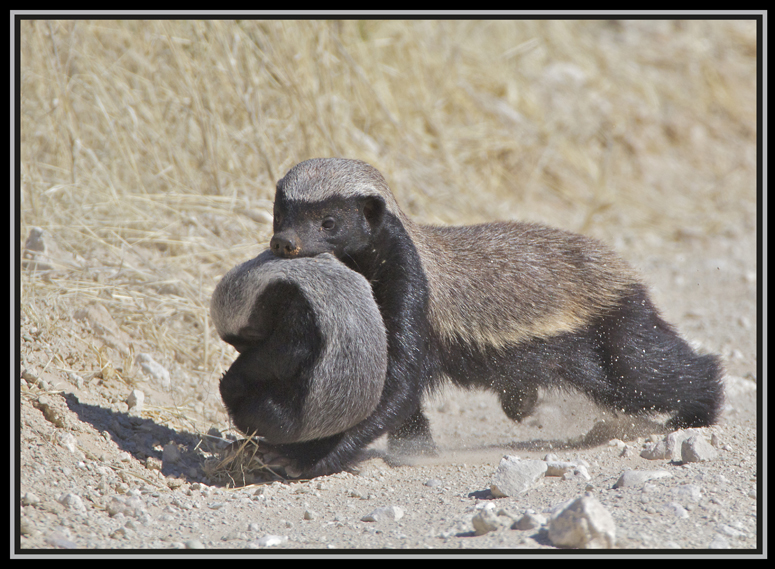

We stayed with them for quite a while, as she covered a good distance. Finally, having reached her destination, she scurried off into the dunes.
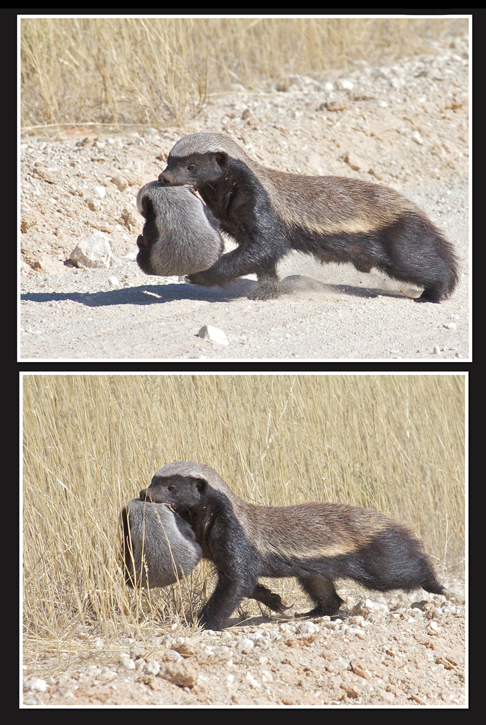
After returning home I found the following information about honey badger families:
"Honey badgers are essentially solitary with no male involvement in parental care in a non-territorial polygynous or promiscuous mating system. In southern Africa, honey badgers do not have a breeding season and cubs are born throughout the year.
The cubs are born naked and blind in a hole prepared by the female and she will typically move the cub to a new den every two to five days, by carrying the cub in her mouth.
The cub develops slowly with its eyes only opening after two months, and will emerge from the den and accompany its mother on short foraging bouts at three months of age, by which time it has the adult's black and white colouration. The cub's mantle is usually far whiter than its mother.
Research in the southern Kalahari showed that cubs stayed with their mothers for a minimum of 14 months, before becoming independent. Juveniles may reach almost adult size within eight months and a son may be far larger that his mother. When one sees two badgers foraging together in the wild, these are usually a mother and her cub, rather than a "pair", even when one badger is substantially larger than the other."
http://www.honeybadger.com/breeding.html











